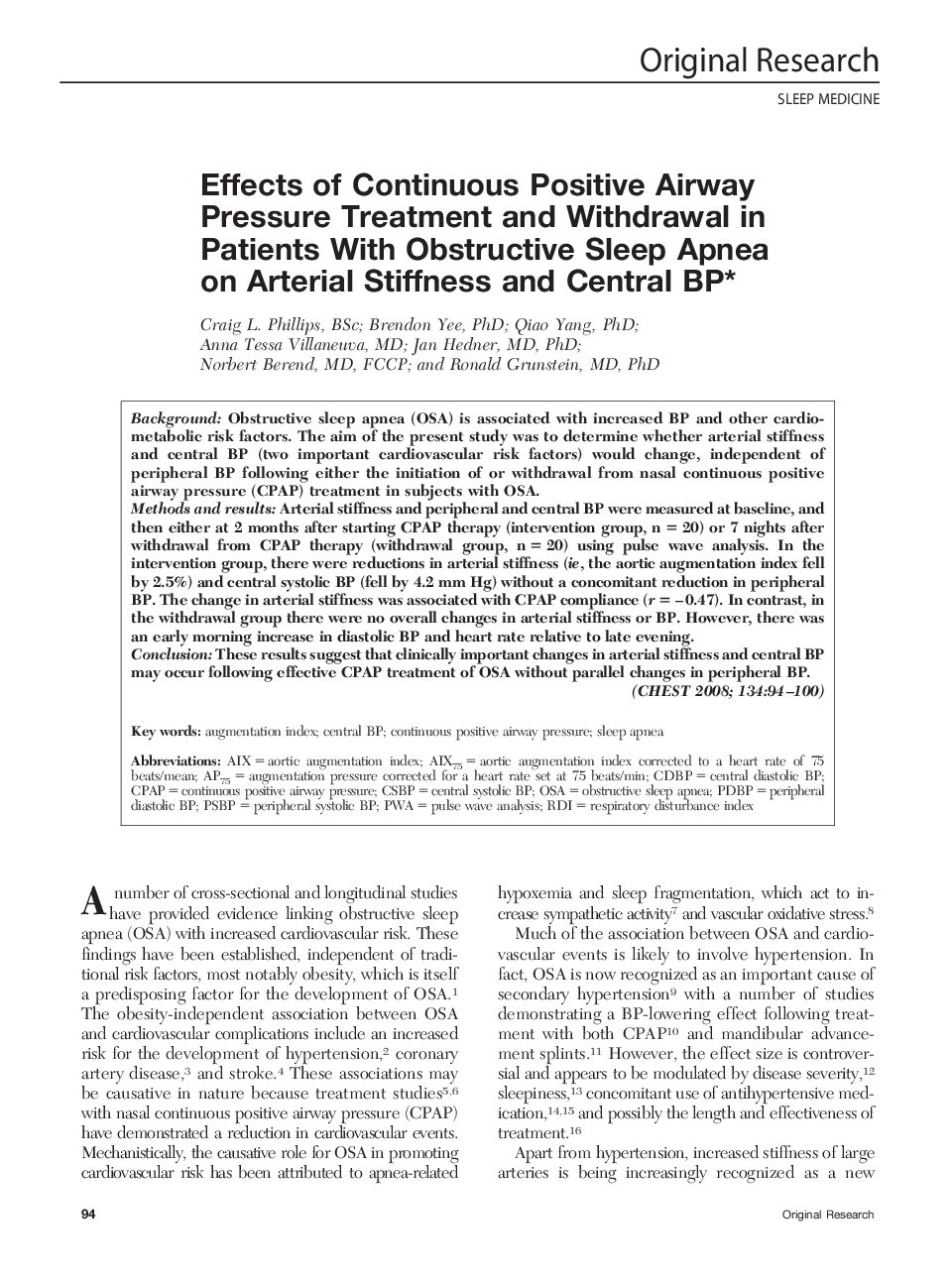| Article ID | Journal | Published Year | Pages | File Type |
|---|---|---|---|---|
| 2903259 | Chest | 2008 | 7 Pages |
BackgroundObstructive sleep apnea (OSA) is associated with increased BP and other cardiometabolic risk factors. The aim of the present study was to determine whether arterial stiffness and central BP (two important cardiovascular risk factors) would change, independent of peripheral BP following either the initiation of or withdrawal from nasal continuous positive airway pressure (CPAP) treatment in subjects with OSA.Methods and resultsArterial stiffness and peripheral and central BP were measured at baseline, and then either at 2 months after starting CPAP therapy (intervention group, n = 20) or 7 nights after withdrawal from CPAP therapy (withdrawal group, n = 20) using pulse wave analysis. In the intervention group, there were reductions in arterial stiffness (ie, the aortic augmentation index fell by 2.5%) and central systolic BP (fell by 4.2 mm Hg) without a concomitant reduction in peripheral BP. The change in arterial stiffness was associated with CPAP compliance (r = -0.47). In contrast, in the withdrawal group there were no overall changes in arterial stiffness or BP. However, there was an early morning increase in diastolic BP and heart rate relative to late evening.ConclusionThese results suggest that clinically important changes in arterial stiffness and central BP may occur following effective CPAP treatment of OSA without parallel changes in peripheral BP.
